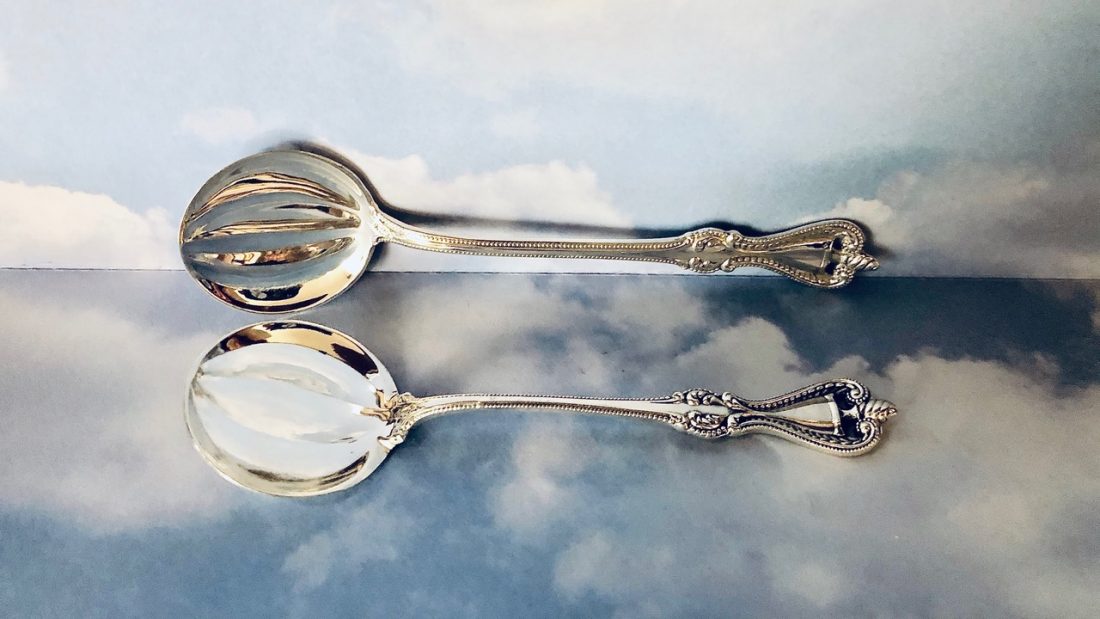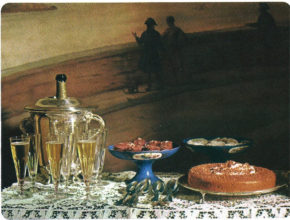Victorian’s liked to have a tool for every purpose. Chocolate spoons were used with drinking chocolate or what we would now call hot chocolate. Victorian’s loved drinking chocolate so much there are reports of milk chocolate, dark chocolate and even white chocolate being melted and served warm.
Chocolate sets also contained a muddler spoon. This was a very long handled spoon that spanned the length of the chocolate pot allowing the hostess to stir the drinking chocolate. Sometimes chocolate making was turned into a performance in the same way that tea was and the hostess would pour hot milk into the pot containing the shaved chocolate then stir until smooth. Indeed, this preceded afternoon tea, but that’s a story for another day.
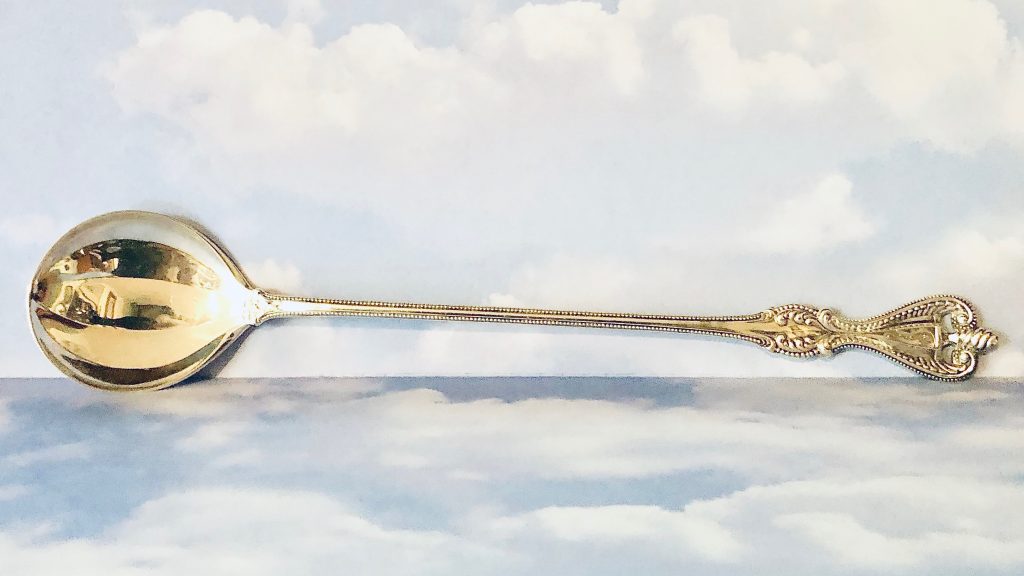
Chocolate spoons are usually just slightly larger than the size of a demitasse spoon as chocolate was served in cups that were only a tiny bit bigger than a demitasse cup. Though chocolate cups and spoons have become bigger over the years, following the changing styles of the beverage.
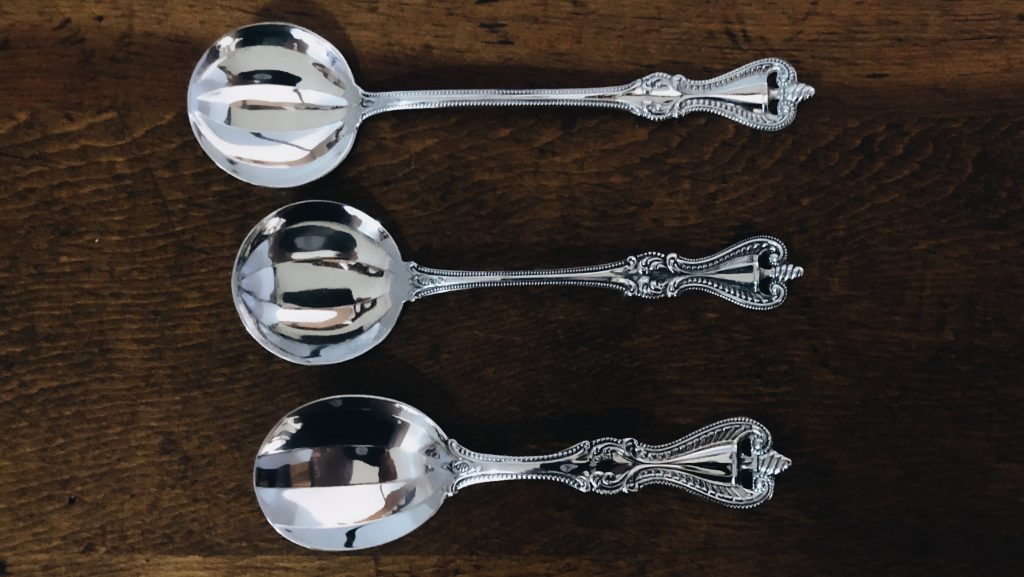
Drinking chocolate is not the same as hot chocolate, which in turn is not the same as the hot cocoa that we often make today for kids. The difference really seems to come down to how much dairy is added and if the chocolate is from bars or cocoa powder.
Starbucks makes a drinking chocolate during the winter months that is much closer to how drinking chocolate might have tasted in Victorian times. Angelique in Paris serves authentic French drinking chocolate that is so rich, I don’t see how anyone finishes a cup on their own. But I think the drinking chocolate you can buy in Spain is the closest to what the Victorian’s would have known as drinking chocolate. It’s basically melted chocolate with a hint of cream. Question is, did the Victorian’s have churros to dip in their chocolate? Probably not, but that is their loss.
So where did this all come from? Drinking chocolate reportedly goes back some 4000 years in South America and rapidly thereafter appeared all through Latin America. Though we would hardly recognize what these early people drank as resembling the hot chocolate of today. Drinking chocolate was made with cocoa beans and water and was poured from cup to cup to create a smooth texture that resembled a froth or foam. Spices including chili powder might be added as well as thickening agents such as ground corn or almonds were sometimes used. Given that many mousse recipes use ground almonds or hazelnuts to give chocolate more body, it’s understandable why this may have been done and what the end result might have been like. Mexican cocoa today contains chocolate and spices, plus the milk and sugar we are more familiar with, but by using a utensil called a molinillo, something resembling the ancient foamy texture is achieved.
It was in the 1500’s that drinking chocolate made it to Spain after the Spanish invasion of Latin America. The Spaniards added sugar, moving drinking chocolate one step closer to the drink we love today. And as chocolate moved along trading routes, chocolate houses began appearing all over Europe. Following in the tradition of coffee houses, chocolate houses were places where men could meet and drink chocolate while doing naughty things. This chocolate drink began to include dairy. Because sugar was so expensive, chocolate houses often charged a fee just to enter into their establishments in addition to the drinks you purchased. Britain was a little behind the continent, but by 1657 a Frenchman opened the first Chocolate house in London.
In 18th century France, drinking chocolate at home became popular and the Sevres porcelain factory began producing pretty pots and cups. Bavaria too made very fine chocolate pots and there were also sterling silver sets being made at this time. Chocolate pots of this time were stout and usually had a small hole in the top for a wooden muddler, (very similar to the molinillo) to be pushed down and twirled between the hands to mix the shaved sweetened chocolate and hot milk into a smooth drink. The chief difference between this and the Mexican hot chocolate, is that there is no froth, rather the French strived for a consistently smooth, thick texture.
Cocoa powder came later, with Dutch process cocoa arriving in 1828. Mass produced solid chocolate appeared in the 1850’s, finally democratized the drinking of chocolate and hot cocoa.
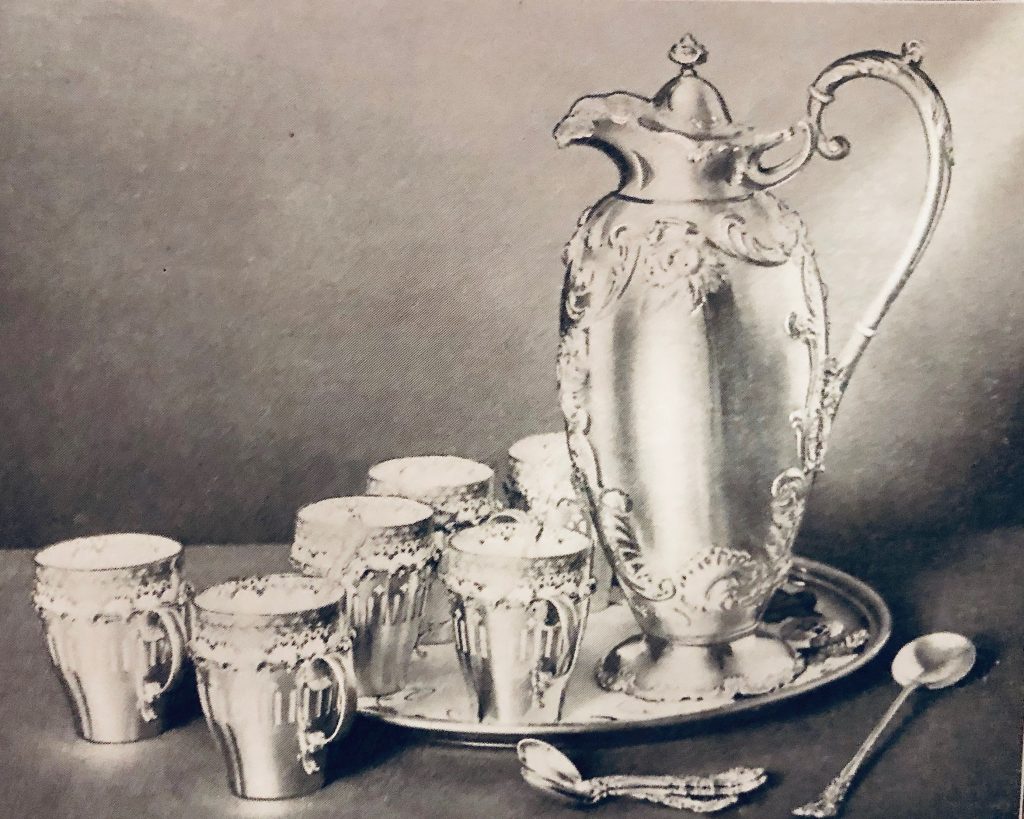
“Chocolate pots or jugs usually have straight sides that slope inwards and look like elongated and lidded tankards.”
Victorian Entertaining by John Crosby Freeman, (1989)
I’ll give chocolate pots their due another time.
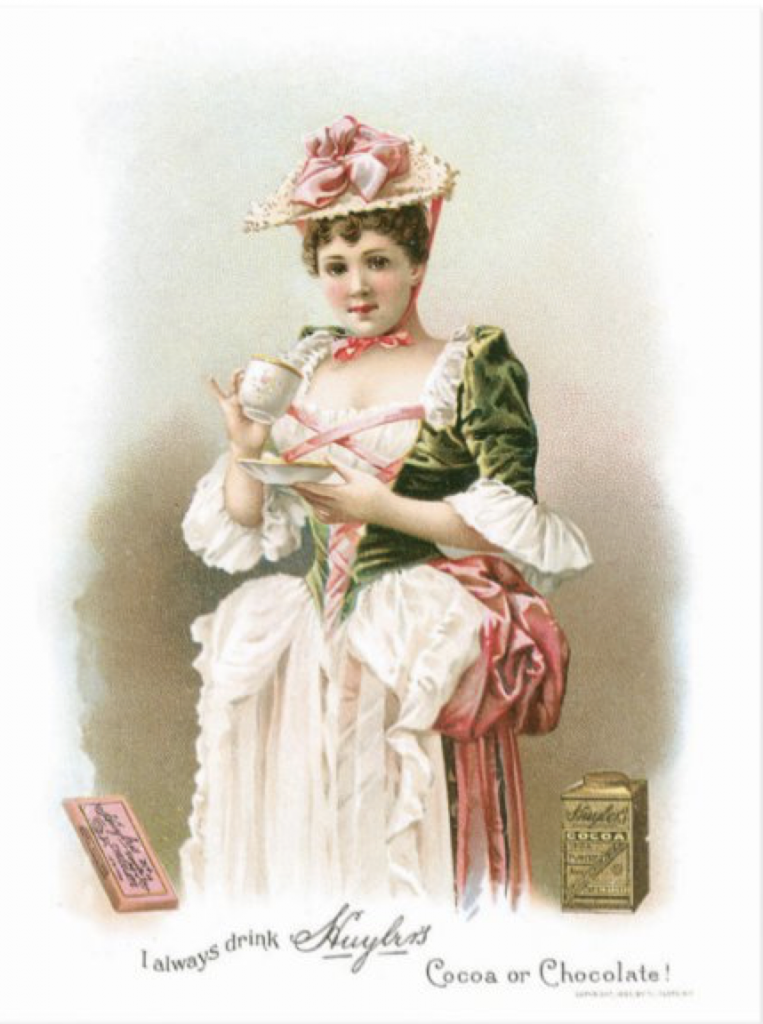
When drinking chocolate finally moved into the houses of the British middle classes in the mid 19th century. Service sets were designed to be sold alongside tea and coffee sets. These no longer had the hole for a wood muddler, which brings us back to those lovely silver muddler spoons.
Unlike Demitasse spoons which are rarely anything but oval in shape, chocolate spoons are circular.
Because drinking chocolate remained a pastime for the rich for so long, finding complete sets of spoons with muddler and drinking spoons is not easy. Because of this they can be expensive. Most are sterling silver as they were purely a luxury item.
Little note: You are allowed to drink from your chocolate spoon, (something you would not do with a demitasse spoon).
How are you all doing? I hope you’re well! Much love, Cheri
